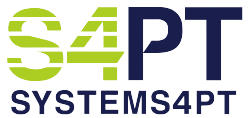
When Calamity Strikes
Nowadays, it is not uncommon for businesses to rely on digital devices and web-based services to complete workflow operations. When access to devices or services is interrupted by a power failure, internet outage, or software disruption, these workflows can come to a screeching halt. As managers scramble to diagnose the problem, staff struggle as they tend to those trying to use their services.
Usually, interruptions are brief, and control is quickly regained. But what about events that last hours or even days?
In January of 2021, fibers cut in Brooklyn, NY, created a broad outage across the northeast United States for Verizon Fios internet service. The following month, winter storms in Texas left more than 4.5 million homes and businesses without power for up to 2 weeks. And throughout 2022, an alarming rise in cyber-attacks brought companies big and small to a halt. Even those with solid cyber-security protocols fell victim to malicious actors.
How can your physical therapy clinic be proactive about continued productivity in case of an internet or system interruption?
To avoid the disorder, distress, and interruption to patient treatments that come with system interruptions, your clinic must develop a Backup and Recovery Plan. On the surface, a Backup and Recovery Plan is a collection of tasks and documents that maintain backup copies of your data and the adoption of alternatives for the actions and processes that manage that data.
Sound like an overwhelming task? We’ve simplified things into three steps that will guide you in creating your plan, making it easier to get and stay ready.
Step 1 – Analyze and Evaluate
The first step in creating a Backup and Recovery, or B&R Plan, is to analyze and evaluate the resources needed to maintain workflow.
Identify the potential downtime events your clinic may face.
While power outages are an unavoidable disruption encountered by all clinics, prioritizing the safety of both staff and patients is crucial. Nevertheless, interruptions like internet outages, software program failures, and malfunctioning computers should not hinder patient treatment plans. Therefore, when exploring backup options, it is essential to choose methods that remain unaffected by secondary events, such as saving backup schedules offline on a single computer, even if that computer were to fail.
Identify the data vital to operation & treating patients safely and effectively.
What information is needed to communicate with staff, patients, and clinic associates during a system interruption? Can that information be accessed immediately after the screen goes blank or power fails?
Look at the processes essential to tracking patient information and clinic activity.
Any computerized processes used to record and track data need to be identified. Which of these processes are needed to continue treating patients on a short-term basis? How can you re-create or substitute those processes offline or offscreen?
Step 2 – Gather and Secure Resources
You know what you need – now it’s time to accrue and organize those resources. Here are a few ideas for preparing downtime resources for your physical therapy clinic.
Print (or save offline) copies of the clinic schedule for the current and following two days every day.
We get it – Creating copies of a changing schedule every day may seem like an eternal task, yet this resource becomes invaluable to clinic operation, even during short interruptions. Knowing who is coming and when allows front desk staff to continue checking-in patients as they arrive.
Maintain a copy of contact information for patients, payors, referring clinicians, and vendors.
Keep communications open by storing a hard copy list of your patients and their contact information. Store in a secure and convenient location for easy reference. Include numbers for service vendors, such as technical support, equipment servicers, and supply providers.
Use printed forms and templates for intake, schedule, billing, and treatment documentation.
Capture data in a manner familiar to patients and staff. Utilize a paper scheduling template to record and track appointments and have patients submit information on pre-printed forms. Keep a running log of emails, faxes, scans, and other tasks to be completed when access is restored.
Back up your hardware, too!
A spare laptop and cell phone, backup power bank/battery pack, and secondary Wi-Fi hotspot access point could all act as lifelines during a sudden power outage, internet outage, or software/hardware failure. Keep these resources updated and charged in a secure location. Don’t forget to add necessary security features to these devices.
Step 3 – Implement and Adhere
While many of these backup and recovery resources seem like you can “set it and forget it,” they must be implemented and maintained thoroughly. The consequences of a poorly managed B&R plan are often as bad as having had no plan at all.
Remember, every clinic is different. Spend the necessary time during step one to be sure you are meeting the needs of your clinic and the patients it serves.
Train staff to carry out the Backup and Recovery Plan
Delegate the tasks and procedures for your B&R plan among staff. Employees should understand the importance of their roles and responsibilities before, during, and after downtime events. Rehearse these roles frequently by holding “downtime drills” that will prepare staff for abrupt changes to their workflow. These drills can also reveal gaps in your plan that need addressing. Do not forget to incorporate your B&R plan into your new-hire training processes!
Monitor compliance.
Regularly monitor that backup protocols are followed, and tasks are being completed. If a staff member is out sick or leaves the clinic, check that their B&R responsibilities do not fall behind. Be diligent with updating forms and processes when requirements change. CMS and many common Payors often change the “rules” of what they need and don’t need from providers.
When downtime events occur, dedicate strict office time for playing ‘catch-up’.
When the dust settles and access is restored, you may be eager to enter any written data into the system, which will serve your clinic best. Remember that completing data entry for hand-recorded information can be tedious and prone to human error. Reduce interruptions to the recovery process by catching up during non-treating hours.
Downtime events can strike without warning and have devastating long-term effects on the unprepared. By implementing and adhering to a comprehensive Backup and Recovery plan, your clinic will have the tools necessary to adapt to sudden changes to workflow, reducing interruptions to patient treatments and upholding your commitment to patient care.
Systems4PT has your back in the event of an outage or interruption.
Systems4PT ensures the security of your clinic’s data through stringent measures such as access controls, encryption of data in transit and at rest, audit trails for monitoring access activities, and regular software updates. These systems adhere to physical security protocols, implement network security measures, and comply with healthcare data protection regulations like HIPAA, emphasizing staff training and awareness to mitigate risks and safeguard patient privacy effectively. When our clinics face power or internet outages, our support team works with clinic staff to obtain any needed schedules and records.
If you would like to learn more about how Systems4PT protects your patient data, please schedule a demo below!
Systems 4PT uses trusted and reliable sources when gathering information.
- Make a power outage business continuity plan with these tips. Kirvan, P. (2021, August 18). Make a power outage business continuity plan with these tips. SearchDisasterRecovery. https://www.techtarget.com/searchdisasterrecovery/tip/Make-a-power-outage-business-continuity-plan-with-these-tips
- Texas power outages Tribune Staff. (2021, February 18). Texas power outages: Nearly half the state experiencing water disruptions as power grid operator says it’s making progress. The Texas Tribune. https://www.texastribune.org/2021/02/18/texas-winter-storm-power-outage-ercot/
- Current Challenges in Health Information Technology-related Patient Safety Sittig DF, Wright A, Coiera E, Magrabi F, Ratwani R, Bates DW, Singh H. Current challenges in health information technology-related patient safety. Health Informatics J. 2020 Mar;26(1):181-189. doi: 10.1177/1460458218814893. Epub 2018 Dec 11. PMID: 30537881; PMCID: PMC7510167. https://www.ncbi.nlm.nih.gov/pmc/articles/PMC7510167/
- East Coast experiencing major internet outage – Cut fiber in Brooklyn likely culprit. Ray, S. (2021, January 26). East Coast experiencing major internet outage —Cut fiber in Brooklyn likely culprit. Forbes. https://www.forbes.com/sites/siladityaray/2021/01/26/east-coast-experiencing-major-internet-outage–cut-fiber-in-brooklyn-likely-culprit/
Explore Our Recent Articles
Busting PT Myths: “Physical Therapy is Just Exercise”
Busting PT Myths: "Physical Therapy is...
Busting PT Myths – Physical Therapy Is Only for Recovery
Busting PT Myths "Physical Therapy is...
Busting PT Myths – Physical Therapy Is Too Time Consuming
Busting PT Myths "Is Physical Therapy Too...




